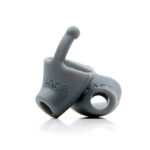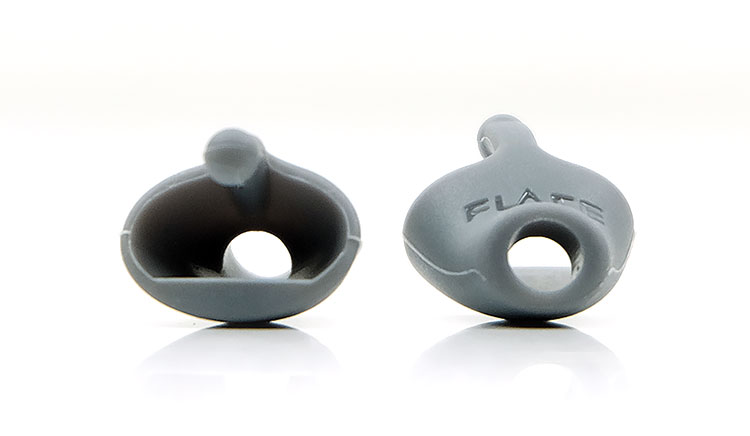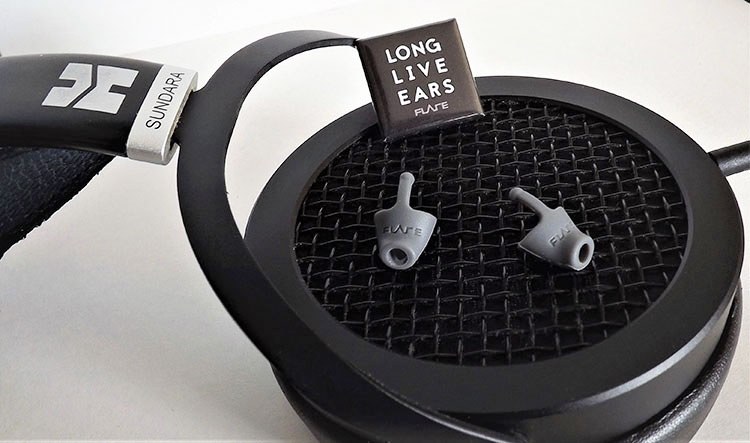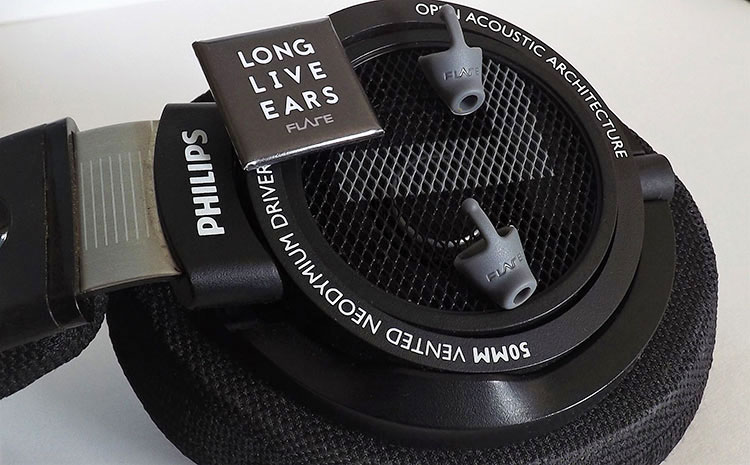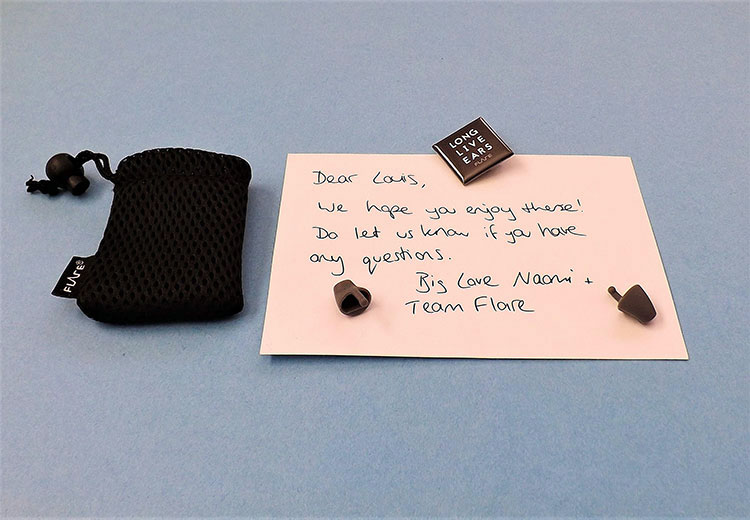The Flare Audio Calmer is a uniquely developed hearing device that fits in your ear to reduce stress and enhance your listening experience. It is priced at £19.99.
Disclaimer: This is a sample that was sent to us in exchange for our honest opinion. Headfonics is an independent website with no affiliate links. We thank Flare Audio for this opportunity.
Click here to read more on previous Flare Audio reviews on Headfonics. Note, this review follows our scoring guidelines which you can read up on here.
Flare Audio has always been more than just simply making very good IEMs. If you take some time to read the background of the company you will notice a long history in professional PA audio.
Our first time working on a review product from Flare, the ISOLATE back in 2016, was very far removed from what we would call traditional audio gear. And for me, it is perhaps more representative of what Flare Audio is about and that is understanding sound itself and its effect on our hearing.
So, it is no surprise really we are really back to that central theme with the launch of the new Calmer. Again, this is not an IEM or a headphone but rather an in-ear device that manipulates sound to reduce the perceived effects of undesirable distortion.
You could argue that they look or perhaps even act much like a set of IEM ear tips but there is much more to the Calmer than simply inserting them in your ear to get a good fit. Also, at £19.99 it may well be a no-brainer with its broad use-based application beyond simply listening to music through a set of headphones.

Technical Pitch
Reduce ‘Distortion’ Reducing ‘Stress’
At a very high level, Calmer is a set of two rather small hollow silicone plug that nestles just inside your ear canal. They are different from regular earplugs in that they are not designed to block out all sound completely.
The objective of the Calmer technology is to reduce resonance (distortion) by using a tiny waveguide (the silicone hollow body plugs) to reflect sound into our ear which bypasses the effect of the Concha. In turn, this reduces our level of stress from everyday auditory events around us.
So, what role does the concha play in transmitting sound? The concha is a basin-like formation on your outer ear just at the entrance to the external auditory canal. It helps to funnel sound into the canal and towards what we call the middle ear where the eardrum is located.
Certain sound frequencies trigger an in-built reaction, most notably mids to upper mids and treble. This is normally associated with alert triggering noises such as phone alerts, slamming doors, and in audio usually percussion.
The higher the amplitude or resonance from these effects the greater the reaction. That biological reaction can cause stress, discomfort, and if exposed to for long periods, health-related effects such as tinnitus.
Application in Audio
Of course, such universal benefits can also be applied to audio gear such as speakers and headphones. In our case, it would be more about headphone use.
For example, enhanced bass is generally more welcome than enhanced treble. An abundance of upper harmonic order or an odd harmonic imbalance can create a displeasing sound in any headphone presentation.
We tend to refer to this sound as being bright, sharp, or metallic and has fairly negative connotations compared to lower-harmonic 2nd order or even-harmonic overtones which are generally smoother and pleasing to the ear.
The ideal sound is an accurate balance between all the harmonic orders but if one had to choose we would probably go smooth and even over bright and odd.
In audio, this harmonic balance can be emphasized or muted depending on the intention of the headphone or earphone manufacturer and what sound they wish to create. And yes, some people are trebleheads, some love very forward or shouty vocals but are they in the minority?
If we go by Flare’s statement on the consequences of excess noise or distortion at these FR levels then possibly yes they are.
The Calmer pitch is thus intended to push down on those areas of the FR without sounding unnatural. Particularly upper mids and harsh treble (2kHz to 8kHz) that elicit that negative ‘wincing effect’ when we hear sharp sounds without throwing a veil over everything else.
Design
First of all, the Calmer system is tiny, or about as big as a typical XL-sized ear tip, and weighs just 0.5g each. They are made of a soft touch durable but also a very flexible silicone material in a greyish ‘Flare’ branded finish.
Not too flexible mind you, they do have a baseline of rigidity that allows them to retain their core shape. I am presuming that is an important feature because, in the end, they are about ‘shaping’ your ear canal to bring about those distortion-reducing benefits.
There are two features to the Calmer design. The first is that they have a curved silicone hollow body with an ‘exhaust’ that is designed to capture sound and ‘transmit’ it into your ear as seamlessly as possible.
The second key feature is a small silicone stem that ensures the Calmer silicone body stays securely in place. You also use that silicone stem for easy handling and fitting.
Comfort & Fitting
Fitting
Now, the Calmer system is small, and if you fit them the wrong way you could end up losing them down your ear canal a bit too easily. Those who have concerns that they might be too big or too small for your size of the ear should rest easy as I found them very simple to fit so long as you insert them the right way.
That is where the stem comes in as it holds everything in place when inserted. To understand which is left and which is right the stem must be to the back of your ear or pressing against your ear and not out or away from your ear.
If you get it the wrong way you will know as there is almost no resistance whatsoever to the Calmer silicone device going right into your ear and it might get stuck there.
The stem applies a little bit of friction and pressure to prevent it from doing that. Also, the correct insertion orientation means the natural bend in the silicone design grips in the right manner so it sits exactly where it should. You will find it surprisingly hard to push them improperly down your ear canal when inserted correctly.
Personally, I had a little bit of a fiddle on my awkward left ear canal shape but the right Calmer insertion was rock solid with no tightening whatsoever.
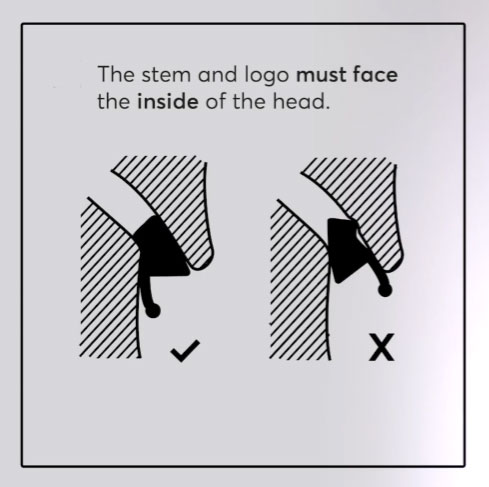
Comfort
The Calmer silicone design weighs 0.5g in your ear which is basically nothing. They do not stick out like some IEMs or plugs and they will not catch in your headphone earpads or unnaturally touch any drivers during headphone use.
Yes, you can feel them in your ear much like an ear tip and no, you cannot use them in conjunction with a typical IEM. Is it possible to shove them on an IEM nozzle? Yes, but the design of the nozzle of an IEM will distort the shape of the Calmer tube and render its benefits moot. Do not turn these into glorified ear tips.
Packaging & Accessories
Tiny product, a tiny package, and more than that, an environmentally friendly package. You will not make too much fuss with the retail bag. This is a small recyclable paper design and more like a reinforced envelope. Certainly, something the Flare Logistics team will not be sweating in terms of shipping costs.
Outside you get your ‘Citizen Flare’ “Long Live Ears” black badge which is entirely reusable. Inside you have a mesh black protective pouch which is of a design I have seen used many times before from the likes of Campfire Audio. You also get a fairly large instruction manual and some stickers.
Performance
Louis
Louis decided to go for a few key test areas including a few headphones and some outdoor noise events. Luckily enough he also had one test candidate with a Tinnitus problem who would happily try out the Calmer system, his wife.
Hifiman Sundara
I first tried the Flare Calmer on my daily cans. Something very familiar to me is the Hifiman Sundara. These full-size open-back planars are known for great highs but they can sound very bright in general tonality.
My first observation with the Calmer is that the highs become less edgy. The highs become subdued by a couple of decibels and it gives the Sundara’s a warmer sound signature which is softer in tone and more relaxing.
The effect also happens in the midrange of my ears. It seems to chop off the very top edginess. For instance, Saxophones tend to have a piercing effect but when the Calmers are in the piercing is gone and they sound smoother.
Is there anything missing in the music or is there a negative trait? Not really. All the music is there but the sharp edges are gone. The one negative trait I notice is that some dynamics are lost and it feels to me that it is in the area of transient response.
Phillips SHP9500
The SHP9500, popularly known as the “ships”, is notoriously edgy and grainy even though people consider them to be great sounding. They are good for the price and their comfort level is excellent.
The grain is almost gone with the Calmers in and the sound signature becomes warmer. The same issue was there with dynamics being subdued by a few decibels.
Outdoor noise
Does the Flare Calmer act somewhat like a passive ANC system you would find on wireless headphones? Not really.
Car horns become less intense. I was trying to find a truck with an air horn to see how tolerable it would be with the Calmers in. I was not successful. I am in actuality a bad candidate for this test because I frequently walk the streets of New York City and loud streets do not bother me.
However, someone next to me is bothered by loud sounds.
Wife Factor
My wife suffers from Tinnitus and she also suffers from Migraine headaches. It is a very bad combination especially being married to an audio head like me. I love loud music. The problem is, well you know. I get that often turn that volume down. I always do because I do not want her in pain and it would not be fair to her.
Well, guess what? I found out that when she has the Flare Calmers in she tolerates loud music way more. She has a set of full-sized Bluetooth headphones she uses mostly for chore work and blocking out noise with ANC.
Well, I caught her rocking out like never before the other day. Her headphones were loud and bleeding out like never before. She was also dancing and singing. I call that a success story.
Click on Page 2 to hear about Mike’s and Marcus’s experience with the Flare Audio Calmer.


